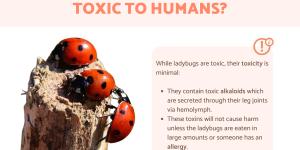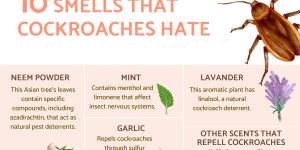Facts about the animal kingdom of Exotic
Learn more about facts about the animal kingdom of exotic by exploring our site and become a true expert on the animal kingdom. You'll find content created for the best professionals with pictures, videos and opinions.
202 articles

Updated
Updated
The European goldfinch or Carduelis carduelis is a very popular bird among ornithologists, as it emits a beautiful and unique song and delights with its colorful plumage. If you're wondering how to differentiate between a male and a female goldfinch, keep reading this AnimalWised article to find out.
In...

Knowledge of the animal kingdom means knowledge of our environment; human life is not conceivable without interaction with nature. Understanding nature helps us to better understand ourselves, our instincts and our processes. However, when we explore the mysteries of the animal kingdom, we might find confusing...

Old World blackbirds are various species in the genus Turdus. One of the most representative species is the common blackbird (Turdus merula) found throughout Europe, North Africa and Western Asia. Although they are known as blackbirds, not all are completely black. They are a type of true thrush with...

The Amazon River basin is the vast area which covers the river itself and all its tributaries. It is the largest river basin in the world, being home to the greatest diversity of fish species found in a single freshwater system. This diversity extends to approximately 7,000 individual species with an estimated...

The pine processionary caterpillar, the larval stage of a specific moth, is known for causing two distinct problems. First, these caterpillars feed on the needles of pine trees, and sometimes other conifers, which can weaken the trees and even lead to their death over time, especially if there are many...

It's interesting to consider what eats spiders. Despite their predatory skills, spiders occupy a middle ground in the food web. They hunt insects and sometimes small animals, but they are also prey for a diverse range of creatures. From common birds and lizards to less expected predators, many animals consume...

Guppies (Poecilia reticulata) are known for their colorful appearance and versatility, making them one of the most common aquarium fish in the world. Another characteristic that makes them so popular is that they are freshwater fish. It is generally easier to keep freshwater fish in aquariums than their...

The total area of China's maritime zone is somewhere between 1 to 5 million km². Such a large discrepancy is due to the contestation over ownership of waters near China's coastline. Even with conservative estimates, China has a lot of ocean with an incredible level of biodiversity contained within. In addition...

Ladybugs are a type of beetle belonging to the arthropod family Coccinellidae. More than 6,000 species have been identified and their populations are distributed globally. A type of beetle, they are relatively small at only around 10 mm long. They are characterized by their colorful patterns on their elytra,...

For millions of years, sea turtles have been vital players in our oceans' ecosystems. These incredible reptiles, encompassing seven distinct species, each boast unique characteristics, habitats, and behaviors, from the colossal leatherback to the tenacious Kemp's ridley. Despite their varied sizes, diets,...

The family Coccinellidae is made up of insects known as ladybugs, ladybirds or lady beetles. Which term you use generally depends on your location, with ladybug being the preference in North America. The reason for so many names is due to an incredible species diversity and population range. They are found...

Ladybugs are toxic, but their ability to cause harm to humans is minimal. There are more than 6,000 individual insect spcies in the family Coccinellidae, the family to which all ladybugs belong. Also known as ladybirds, ladybugs are noted for their colorful forewings known as elytra. They are often red with black...

Reptiles are some of the most diverse and ancient creatures on Earth, thriving in nearly every environment—from scorching deserts to dense rainforests. As cold-blooded vertebrates, they rely on their surroundings to regulate body temperature, and their unique adaptations have allowed them to survive for millions...

Aquatic ecosystems have a varied range of trophic interactions. This refers to the feeding habits of organisms, including predators, prey and parasites, among others. Predation on snails by certain fish acts as a regulatory mechanism that maintains population dynamics and prevents excessive proliferation....

Ever had one of those cute, spotted ladybugs land on your finger and wondered if it could bite? The short answer is yes, but don't worry. While ladybugs do have tiny mouthparts capable of biting, they rarely break human skin and aren't interested in us as food. Their mandibles are designed for munching...

Choosing the right fish for your aquarium requires various considerations, with their diet being particularly important. Some fish are carnivorous and cannot share a fish tank with species it might eat. Others will need specialized nutrition to ensure health and well-being. Algae eaters are aquarium fish that...

Corydoras catfish are among the most popular freshwater fish for home aquariums, loved for their peaceful nature, fascinating behaviors, and ability to help keep tanks clean. With over 170 recognized species, these bottom-dwelling fish come in a variety of sizes, colors, and patterns, making them a favorite...

Angelfish are different species of freshwater fish from the genus Pterophyllum. They are one of the most popular freshwater species in aquarium keeping due to their elegance and peaceful behavior, making them great tank mates for a wide variety of aquatic species. They are also highly prized for their physical...

In the crushing depths of the ocean, where sunlight fades and life takes on bizarre forms, lives the oarfish, Regalecus glesne. This extraordinary creature, the longest bony fish on Earth, can grow to a staggering 36 feet. Its rare appearances near the surface, or on beaches, always cause a stir. With its...

Found in the phylum Cnidaria, polyps are small organisms which are essential to marine ecosystems. They are cylindrical in shape and have tentacles, the latter they use for feeding and other behaviors. Almost all are sessile, being attached to certain substrates. It is for this reason they are so important to...

All types of jellyfish are fascinating animals. Some look like creatures you are more likely to find in a fantasy novel or sci-fi movie, but they are real animals and important members of their aquatic ecosystems. Belonging to the Cnidaria phylum, these gelatinous creatures have a great diversity of...

Over the course of millions of years, tarantulas have developed advanced hunting methods and a variety of dietary preferences as predators. Understanding what these arachnids eat, both in their natural habitats and in captivity, is crucial for appreciating their role in ecosystems and ensuring their...

Seahorses are one of the most fascinating creatures in nature. Despite swimming upright and having a strange configuration of fins, these aquatic animals are a type of fish, similar to salmon or sharks. They are also well known for their characteristic reproductive behaviors where the female deposits the...

Cormorants are part of the Phalacrocoracidae family, a family of aquatic birds that also includes shags. Both are skilled underwater hunters, diving from above the water's surface to pinpoint the fish and other aquatic animals that make up their diet. They are social birds, living in colonies and even...

Squids come in many shapes and sizes, from the Giant squid stretching 13 meters (43 feet) to the Pygmy squid barely reaching 2 centimeters (0.8 inches). These sea animals live in different parts of the ocean, each adapted to its own environment. Scientists keep learning new things about how squids live...

Seahorses, members of the genus Hippocampus, have evolved into 46 species, living across temperate and tropical waters worldwide. From mangroves to coral reefs, these fish share traits that help them survive in marine environments. Their upright swimming stance differs from other fish, as they move through...

Birds rest in ways that differ greatly from humans and other mammals. From sleeping with half their brain alert to balancing on one leg, their sleep habits have evolved to keep them safe while getting the rest they need. Each bird species has developed unique ways to sleep based on their environment and...

The Coccinellidae family, commonly known as ladybugs or ladybirds, includes over 6,000 species worldwide. These beetles have evolved diverse reproductive strategies that ensure their survival across varied environments. From their distinctive mating behaviors to their complex egg-laying patterns, ladybug...

Cockroaches are among the most unwelcome pests, and getting rid of them can feel like an endless battle. But did you know that certain smells can naturally repel these resilient intruders? From common household ingredients to aromatic essential oils, these natural solutions are effective, safe, and chemical-free....

Sea turtles undertake vast oceanic migrations to reproduce, swimming up to 2,000 kilometers from feeding grounds to nesting beaches. Females emerge from the sea only to dig nests and lay eggs, following ancient nesting routes their species has used for millions of years. This complex process, from adult...

Ants are known for their incredible ability to source food and carry it long distances. If you have every seen one pick up some crumbs, you will have noticed they often seem to scurry about. Looking closely, you will see their antennae constantly moving to receive information from their environment....

A fish, genetically speaking, is a cold-blooded, aquatic vertebrate equipped with gills for breathing and fins for swimming. Over a period of thousands of years, these animals have become accustomed to many aquatic conditions, from shallows to darkness. Fish come in all shapes and sizes. In fact, fish...

A hummingbird nest fits on a quarter, yet keeps these tiny birds and their babies safe. You might spot one in your yard, garden, or local park - and knowing what to do next matters. By knowing how and where they nest, you can create a safe environment for them in your outdoor space. We’ll cover tips for...

Known scientifically as gulls, we commonly call the members of the bird family Laridae Seagulls. This is because they inhabit a variety of coastal environments, although not exclusively. They can also live near freshwater bodies of water, as long as they have their necessary resources at hand. They use these...

Web-footed birds, also known as aquatic birds, are a fascinating group of species perfectly adapted to life in or around water. From sleek swimmers like ducks and geese to graceful flyers like seagulls, these birds share a common feature: their webbed feet. This unique adaptation enables them to glide effortlessly...

Seagulls are a common sight along coastlines, gracefully soaring through the skies or scavenging for food. But have you ever wondered where these adaptable birds go when it's time to rest? Despite their constant activity during the day, seagulls exhibit unique sleep patterns and habits that enable them...

You might expect tree-climbing birds to be unable to fly, but this is not the case. While there may be some flightless birds which can climb trees, most tree-climbing birds can also fly. This is because the reasons why these birds climb trees is not to travel, but to look for food, build nests and carry...

Hummingbirds are well known for their colors, incredible rapid wingbeats, and agility in flight. Despite their tiny size, these birds play a crucial role in pollination and are a delight to birdwatchers around the world. But where exactly are these birds most common, and what kind of habitats do they...

Cockroaches are notorious for their rapid reproduction, making them one of the most resilient and persistent pests worldwide. Their ability to multiply quickly stems from a combination of biological adaptations and survival mechanisms. Female cockroaches can produce large numbers of eggs in short time...

Iguanas do lay eggs as they are oviparous, meaning the eggs are laid and hatch outside the mother. We may associate reptiles with this type of reproduction. However, this is not a trait which is common to all reptiles. There are some reptiles which are ovoviviparous or even viviparous, meaning the eggs...

Cockroaches are among the most resilient and adaptable creatures on Earth, known for their ability to survive in a wide range of environments. While their presence is often unwelcome in homes and businesses, understanding the cockroach life cycle is crucial for effective pest control. Cockroaches go through...

Did you know that male seahorses are the ones that give birth? It’s a fact that might surprise many, as it’s quite unusual in the animal kingdom. While most species have females giving birth, seahorses have flipped the script. This unique reproductive process is just one of the many fascinating aspects of...

Tarantulas are types of spider of the family Theraphosidae which have certain defining characteristics. These include their size since they are some of the bulkiest spiders in terms of size and weight. There are spiders of other families which may have a larger leg span, but they will weigh less than...

Tarantulas are often feared and misunderstood. Their large size and intimidating appearance can lead to the belief that they are highly dangerous. However, this is a common misconception. While tarantulas are venomous, their venom varies significantly between species, and many pose little to no threat to humans.
In...

Iguanas are a group of reptiles belonging to the Iguanidae family, in which there are more than 40 individual species of lizard. While there is a great diversity of iguana species with a wide-ranging population distribution, perhaps the most well-known the green iguana (Iguana iguana). Although it is...

Spiders are a diverse group of arachnids, with over 40,000 known species displaying a vast array of sizes, behaviors, and adaptations. Although tarantulas are part of the spider family (Araneae), they are distinguished by their impressive size and robust build. In addition to their notable size, tarantulas...

When asking where iguanas live, we need to be specific. While many may think of the green iguana as being the most representative iguana species, there are around 40 extant species in the family Iguanidae which have been identified. Divided into seven genera, these iguana species are most associated with...

The ocean teems with a diverse array of life, including the mesmerizing -and feared- jellyfish. Among these gelatinous creatures, the fried egg jellyfish is instantly recognizable for its distinctive appearance. While their beauty is undeniable, a common concern for water enthusiasts is the potential...

Also known as the man-o-war or bluebottle, the Portuguese man o' war (Physalia physalis) is a species of cnidarian. This means it is in the same taxonomic phylum as jellyfish, corals and sea anemones. Despite bearing similarities to jellyfish, these marine animals are actually hydrozoans. It is actually...

Jellyfish are captivating and diverse marine creatures that belong to the phylum Cnidaria, which also includes corals and sea anemones. Jellyfish are known for their unique stinging cells called cnidocytes, which contain venomous structures. While many species are harmless and pose little threat to humans,...
